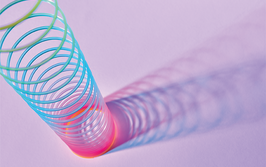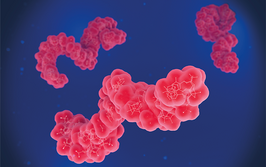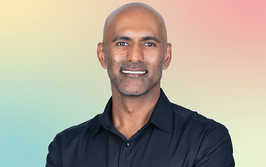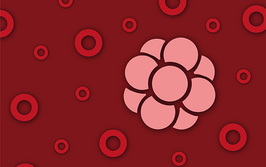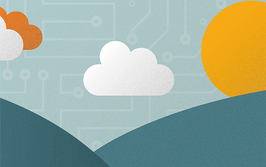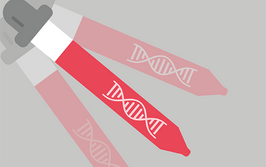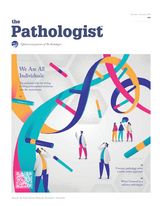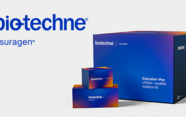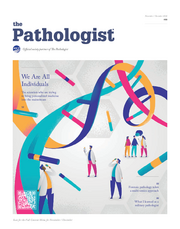Delivering the Digital Revolution
Sitting Down With… Darren Treanor, Diagnostic Digital Pathology Lead for The Royal College of Pathologists and Consultant Liver and Gastrointestinal Pathologist at Leeds Teaching Hospitals NHS Trust, UK
Luke Turner | | Interview
What first piqued your interest in digital pathology?
On the digital front, I had always enjoyed computing. Even during medical school, it was something that I did on the side as a personal interest. When I first came to Leeds, I enrolled in a part-time computer science degree. Then, in 2003, we received a Department of Health funding pilot for digital pathology – a combination of my two interests. This visionary scheme aimed to find out whether digital technology had a place in pathology. It did, of course, so then I did a PhD in digital pathology and helped create the Powerwall.
What is the Powerwall?
Digital pathology scanners existed 15 years ago, but viewing slide images on computer screens was far inferior to doing so under a microscope, so pathologists were (rightly) rejecting the technology. Instead of filling your field of view with a very high-quality image in the same way as a microscope, early digital systems could only provide a tiny (one-megapixel) display at slow speed – one frame per second. For comparison, most modern animation is done at 24 frames per second!
I was convinced that it was possible to create a better viewer, so I took my ideas to virtual reality specialist Roy Ruddle, Professor of Visualization at Leeds University. I thought a VR headset would be perfect for viewing huge pathology images. And it was good – Roy made a prototype for viewing digital pathology images in 2006. But he told me, “We’ve got something next door that we think is far better for what you’re doing,” and opened the door into a computing research lab that contained a 50-megapixel, 28-screen Powerwall. Our images are many gigapixels in size, so a large, high-quality display was much better than a narrow (albeit immersive) view. As soon as I started using it, I knew that it was something really special. We then conducted experiments and found that, with no modifications, the Powerwall was as fast as a microscope.
We knew we were onto something big. Thankfully, a research grant allowed us to test the Powerwall with pathologists, modify it around their needs, and develop software that can display images on a tiny laptop screen, a big computer monitor, or a gigantic Powerwall.
Where do you think digital pathology is heading over the next few years?
We pride ourselves at Leeds on our evidence-based approach, and I think we have a realistic view of how many challenges there are to digitizing any lab. Having said that, the pace of deployment has been astonishingly fast; I underestimated how much it was going to explode over the last few years. I think that, in the UK, we will see lots of regional use – mainly for point-to-point sharing of patients’ data to get second opinions – but whole clinical adoption will be a bit slower.
As for AI, it might take some time before there is a “killer tool” that pathologists use for image analysis, but it will definitely come. The reason there is so much excitement at the moment is that deep learning has come along and improved accuracy rates in our domain – from 80 percent (with the older image analysis) up to 99 percent in certain areas (for instance, finding cancer in lymph nodes, a repetitive and arduous task on the microscope). If we can show that these tools are replicating that performance in the real world, there’s a huge opportunity for it to become mainstream. We’re approaching with cautious excitement because, as a multidisciplinary group with broad knowledge including computing, we understand the strengths and weaknesses of the technology. Luckily, its biggest strength is in clearly defined tasks, such as those where you can tell it to find something specific within an image. Pathology, of course, is full of these scenarios, so it’s an exciting opportunity!
How will this push toward digital pathology affect those at the start of their careers?
People shouldn’t be afraid of the technology. Some are saying that it will reduce the need for pathologists, or make pathology less interesting as a job. I understand those perceived risks, but if you implement the technology correctly, it will make being a pathologist much more exciting, and you’ll achieve a lot more for your patients. Also, the digital revolution brings pathology out of the lab and into the general hospital arena, so I’d reassure people starting out that – with genomics and digital pathology beginning to come together – it’s a really exciting time. New pathologists will learn different things to what our generation learned, but that’s the nature of medical progress. I’m sure that we will soon look back on our past and wonder how we ever used the microscope for so long.
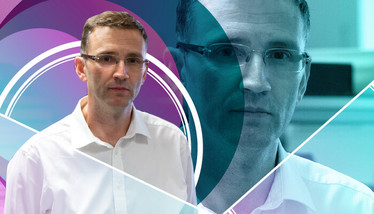
While completing my undergraduate degree in Biology, I soon discovered that my passion and strength was for writing about science rather than working in the lab. My master’s degree in Science Communication allowed me to develop my science writing skills and I was lucky enough to come to Texere Publishing straight from University. Here I am given the opportunity to write about cutting edge research and engage with leading scientists, while also being part of a fantastic team!

